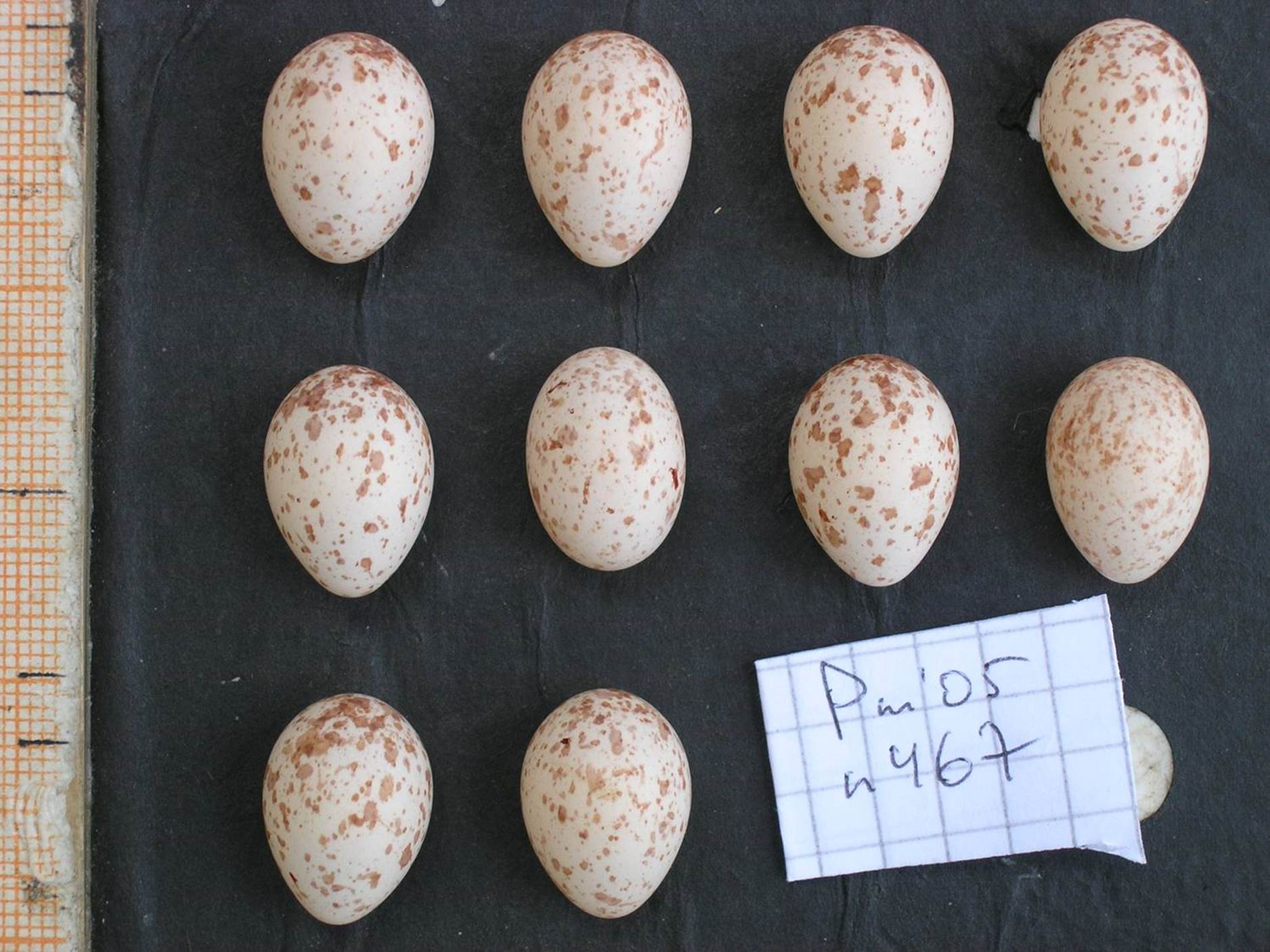Text and photos Marko Mägi, marko.magi@ut.ee
Translation Liis
Great tit eggs
Most tits have already finished their egg-laying. The females sit in the nests, adjust the eggs every now and then and wait for the chicks to hatch. There is not long time left until the first tit chicks appear. On observing the incubation in the nest camera it is possible to see how active a process it is – it is not just sitting in one place but an active ”trampling” procedure which the egg shells bravely have to withstand..
Bird eggs have several shapes and colours; often the eggs are patterned. The pattern on the shell has several functions: it makes it more difficult for predators to find the eggs, at the same time the pigments in the egg shell may protect the foetus against too strong sunlight, or conversely, help the development of the foetus by helping to catch heat. Among many cavity nesting bird species, for instance among owls, the eggs are altogether without pattern; for a cavity nester an egg shell pattern has evidently no important role for protective colouring or heat exchange.
Still there are a great many cavity-nesting bird species who lay eggs with rust-coloured spots on the eggs similar to those of tits. Although the function of the spots has not been convincingly explained yet, it has among other things been assumed that by the intensity of the spots the female may communicate her quality to her partner. The partner of a so-called high-quality female should according to the theory pay more attention to her, and not visit the neighbouring lady. The hypothesis has however not found any convincing confirmation.
Some ten years ago a scientific theory about the structural function of the spots on the egg shells was offered. The substance that creates the spots is porphyrin and it should make the egg-shells stronger. Corroborative evidence was also found on measuring the thickness of the shell of great tit eggs: it turned out that in the area of the porphyrin spots the egg shell was thinner but the area with spots was none the less more resistant to physical pressure.
A proper theory however needs experimental corroboration. One of the experiments in which the egg-laying of the birds was manipulated through the availability of the calcium necessary for egg-laying was carried out in south-western Estonia (link). Over the years scientists from the University of Tartu collected data about the egg shell patterns of great tits and the collected data allowed for the first time a check of the validity of the hypothesis. According to the theory the eggs of birds that had been provided with extra calcium should have smaller and lighter spots, the females with a deficiency of calcium should however have had to invest more porphyrin in the egg shells.
On analysing the egg shell pattern of the great tits it became clear that the ”spottiness” varied over the years which in turn hints at a significant effect of the conditions during the nesting period on the exterior of the eggs. A direct effect of calcium was however not noted on the pattern of the egg shells except for one test year when the effect was the opposite to that expected from the conditions – the eggs of birds that had been given calcium had significantly more pigment than those of the control group tits. Thus the data from the Estonian tits do not confirm the hypothesis about the structural function of the pigmented spots:
But it is certainly not worth assuming that with this the theory is conclusively put to rest – for the final answer more experimental studies, with negative results, are needed. In addition, until today the function of the eggshell pattern of cavity nesters has still remained a secret.
Mägi M, Mänd R, Konovalov A, Tilgar V, Reynolds SJ, 2012. Testing the structural-function hypothesis of eggshell maculation in great tits: an experimental approach. Journal of Ornithology, 153: 645−652.



